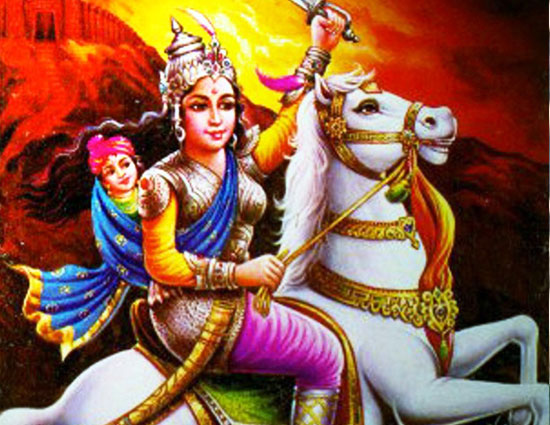Jhansi Rani Lakshmi Bai- Woman Icon Of India That Changed History
By: Priyanka Maheshwari Thu, 16 Nov 2017 1:38:03

Rani Lakshmi Bai of Jhansi is one of the leading figures of the First War of Indian Independence (1857), and is a symbol of the resistance to British rule in India. She has gone down in Indian history as a legendary figure, a firebrand who began the Indian Revolution against British colonialism.
he was born to a Maharashtrian family at Kashi (now Varanasi) in 1835. At a tender age of four, she lost her mother. Her father raised her in an unconventional way and supported her to learn to ride elephants and horses. She also took formal training in martial arts, which included shooting and fencing. In 1842, she married Maharaja of Jhansi, Raja Gangadhar Rao Niwalkar. On their wedding day, she was given the name Lakshmi Bai. In 1851, she gave birth to a son. Sadly, the child did not survive for more than four months.
Gangadhar Rao fell sick and became very weak in 1853. So, the couple adopted a son and named him Damodar. To ensure that the British did not raise an issue over the adoption, Lakshmi Bai got this adoption witnessed by the local British representatives. Soon, Gangadhar died. After his death, the then Governor General Lord Dalhousie refused to accept Damodar as heir to Gangadhar’s throne.
In March 1854 Rani of Jhansi was granted an annual pension of 60,000 and was ordered to leave the Jhansi fort. Lakshmi Bai was, however too brave a woman to be cajoled or browbeaten. She collected weapons and ammunition, and when the British invaded the fort of Jhansi, they were surprised to find the brave daughter of India, with sword in her hand, answering forcefully to the cruel strokes of a mighty enemy.
The Battle for Jhansi (Rebellion of 1857)
Jhansi became the focal point of the uprising. Rani of Jhansi began to strengthen her position. By seeking the support of others, she formed a volunteer army. The army not just consisted of the men folk, but the women were also actively involved. Women were also given military training to fight a battle. She assembled 14,000 rebels and organized an army for the defense of the city.
Meanwhile, unrest began to spread throughout India and in May of 1857, the First War of Indian Independence erupted in numerous pockets across the northern subcontinent.
However, Lakshmi Bai was no match for the British power. After losing Jhansi, she fought from the fort of Gwalior. However, she could not overpower the British forces. But she fought till her last breath and laid down her life for the sake of freedom.
An iconic woman:
Her bravery, courage, wisdom, her progressive views on women’s empowerment in 19th century India, and her sacrifices made her an icon of the Indian Independence Movement. The Rani was memorialized in bronze statues at both Jhansi and Gwalior, both of which portray her on horseback. Her story became a beacon for the upcoming generations of freedom fighters.
Rani Lakshmibai of Jhansi will always be remembered for her unbreakable patriotism and astonishing courage.





